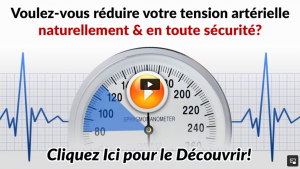The #1 Rated Blood Sugar Formula
The Difference Between Hypertensive Emergency and Benign Hypertension

What is a hypertensive emergency?
Malignant hypertension is the most severe type of high blood pressure. It qualifies as a hypertensive emergency. Blood pressure often exceeds 180/120 mm Hg, with the bottom number above 130 or 140 mm Hg. A hypertensive emergency affects the entire body, causing damage to multiple organs and organ systems. Doctors once defined malignant hypertension as extreme blood pressure that damages the retinas. However, health experts now recognize that the problem can present in a range of ways, and they define it more generally, noting that it can damage multiple organs. Many people with malignant hypertension do experience eye changes, such as:- blurred vision
- seeing spots
- sudden blindness
- bleeding
Hypertensive emergency vs. benign hypertension
Normal blood pressure usually ranges from 90/60 mm Hg to 130/80 mm Hg. Benign hypertension is a less dangerous form of high blood pressure, which doctors may also call essential hypertension. It does not stem from a specific medical condition, though lifestyle factors such as smoking, eating too much salt, and obesity may play a role. Unlike malignant hypertension, benign hypertension is not a medical emergency. It is a chronic condition, and despite its name, it can cause harm over time. For example, benign hypertension may affect the kidneys by thinning the renal cortex. It may also cause protein to leak into urine. However, benign hypertension does not cause significant, immediate kidney damage, changes to the eyes, or widespread organ damage, as seen in hypertensive emergencies such as malignant hypertension. If a person with benign hypertension does not receive treatment for it, it may lead to a hypertensive emergency. However, as many as 60% of people who have experienced a hypertensive emergency may have no history of benign hypertension.Crisis, Emergency, and Urgency
A “hypertensive crisis” is an umbrella term that includes cases of hypertensive urgency and hypertensive emergency, such as malignant hypertension. While about 30% of adults in the United States have hypertension, 2% or fewer will experience a hypertensive crisis. The difference between hypertensive urgency and a hypertensive emergency is that no organ damage occurs in cases of urgency, despite a severe elevation in blood pressure. Organ damage is a defining feature of a hypertensive emergency. A rapid increase in blood pressure can cause hypertensive urgency or an emergency, even when blood pressure is still within the normal range. This can even involve diastolic blood pressures as low as 100–110 mmHg. But a person with hypertensive urgency or an emergency typically has blood pressure higher than 180/120 mm Hg. Although technically the term “hypertensive crisis” includes cases of hypertensive urgency and emergency, doctors sometimes only use the term for hypertensive emergencies, such as cases of malignant hypertension. This is often true if brain dysfunction is involved, causing loss of consciousness, confusion, seizure, or stroke. Causes A hypertensive emergency is a common complication of benign hypertension. This means that people with high blood pressure have an increased risk of hypertensive emergencies, such as malignant hypertension. Other causes of malignant hypertension include:- suddenly stopping medication, especially blood pressure medication
- using certain drugs, especially amphetamines
- having a condition that affects the central nervous system
- having a disease that affects the blood vessels of the kidneys, such as renal artery stenosis
- having certain kidney diseases, such as glomerulonephritis
- having endocrine system disorders, such as Cushing’s syndrome
- having aortic dissection
When to contact a doctor
Blood pressure above 180/120 mm Hg may be the first sign of a life threatening emergency. If either number exceeds this, seek immediate medical care. This might involve calling 911 or the local emergency number.How long can you live with malignant hypertension?
The prognosis of patients with malignant hypertension is guarded. Five-year survivals of 75% to 84% have been reported with treatment; without treatment, the life expectancy is less than 24 months. Most deaths are a result of heart failure, stroke, or renal failure.






